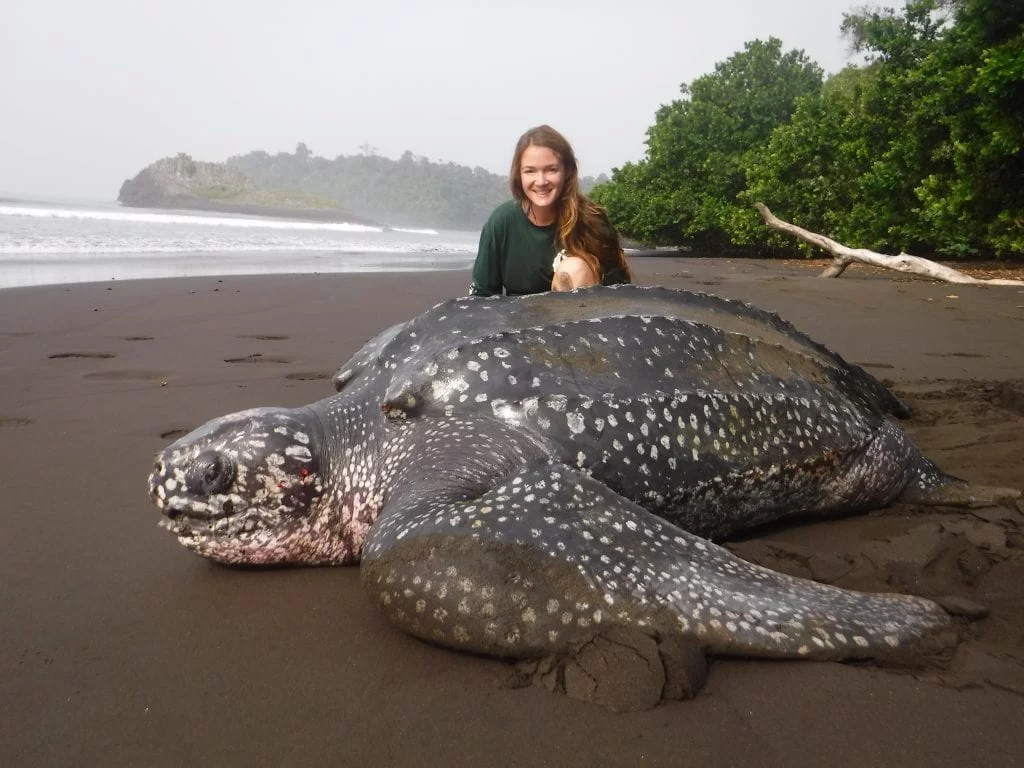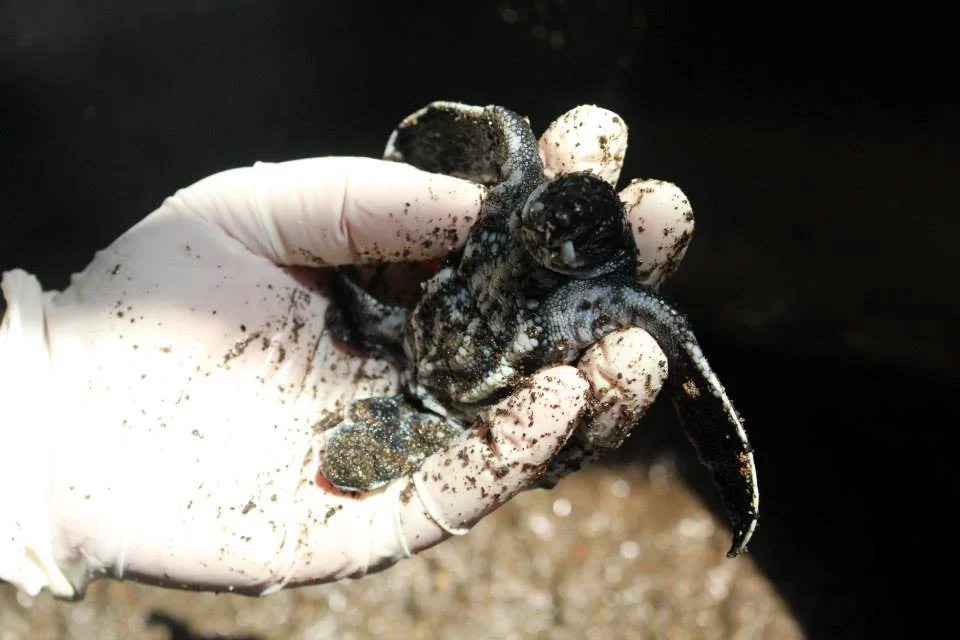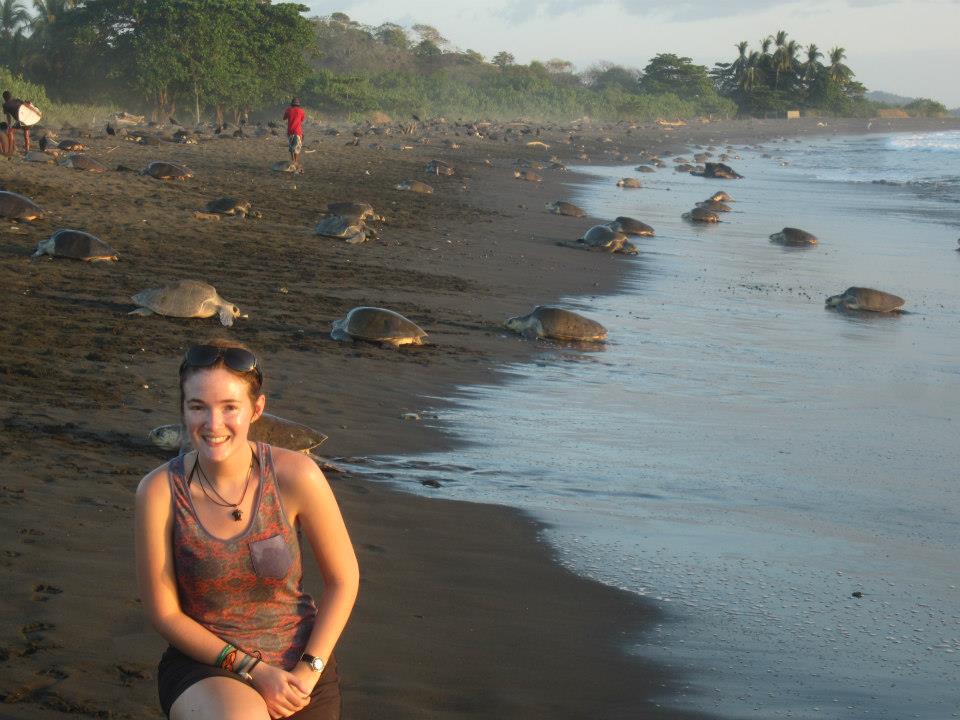World Turtle Day is a moment in time to commemorate the diverse existence of both terrestrial and marine turtle species and an opportunity to draw attention to threats facing their survival. The first turtles evolved over 300 million years ago, and although many species have come and gone since their first appearance in the fossil record, there are approximately 356 extant turtle species currently identified. Unfortunately, about 40% of these species are threatened or endangered with extinction. There are, however, actions we can take to help reverse these declining trends.
Turtle diversity & ecological importance
Terrestrial, freshwater, and marine turtle species can be found on all continents except Antarctica and in all parts of the oceans apart from the Arctic and South Oceans. The largest turtle, the leatherback sea turtle, typically weighs around 1,500 pounds and measures between 6 and 7 feet. Leatherbacks play a vital role in ocean ecosystems by controlling jellyfish populations that in turn consume small fish and fish larvae. They can consume their weight in jellyfish every day. Small tortoises such as the speckled tortoises, aid ecosystem functioning by spreading the seeds of the plants they feed on throughout their habitats.

Marine turtles provide ecosystem services such as maintaining healthy seagrass beds and coral reefs, balancing marine food webs, and facilitating nutrient cycling from water to land.
Terrestrial and freshwater species offer other ecosystems services such as seed dispersal, protective habitat creation for other species (burrows), aquatic vegetation control, and freshwater ecosystem scavenging.
In other words, apart from these species’ inherent rights to exist and persist in their habitats, they play vital roles in the functioning of various ecosystems. We must protect them.
Threats to turtle survival
There are many threats facing turtle species around the globe. Direct take, or illegal harvest, of turtles and/or eggs for consumption or sale in the illegal wildlife trade is an overarching threat affecting marine, freshwater, and terrestrial species of turtles.

Marine turtles are exposed to threats such as plastic pollution, contamination, overfishing, fisheries bycatch, coastal development, beach erosion, light pollution, climate change, and vessel strikes. The greatest threat facing the survival of leatherback turtles is fisheries bycatch, or incidental catch in gillnets and longlines.
Other specific threats facing freshwater and terrestrial species include habitat destruction, introduced predators, overexploitation, consumption of litter, pet trade, consumption for food and medicine, invasive species, road collisions, and climate change.
How technology can help
The Leatherback Project tackles some of the major threats facing sea turtles using innovative technology solutions. We are testing bycatch reduction technology such as green LED lights on gillnets in Ecuador and using other technological advances such as underwater remotely operated vehicles (ROVs) and drones to monitor beaches and reef habitats for sea turtle presence and activity.
The large screen, versatility, portability and compatibility of the Lenovo Tab P11 Pro has been key to operating the ROVs and allowing our team to make real-time observations in the field in difficult conditions. On nesting beaches, we use temperature data loggers to monitor the incubation temperature of developing sea turtle embryos, which can help us know how to mitigate threats of rising beach temperatures around the globe.

We also use advances in artificial intelligence to generate a photo identification program for leatherback turtles to enhance data collection and collaboration for the conservation of this species internationally. Complex data analysis, mapping, programming, community presentations, and team training have all been made possible in the field due to the functionality and reliability of my ThinkPad!
How can you help?
We make choices every day that affect the planet and its species. There are a wide array of ways to help protect turtle species:
- Only adopt pet turtles or tortoises from rescue centers, and never release your pet turtle into the wild.
- Don’t buy tortoiseshell products. (You will be supporting the illegal wildlife trade.)
- If you see a turtle trying to cross the road, give it a hand!
- Petition your local government to protect turtle habitats from destruction and construction.
- If consuming seafood is not a personal livelihood choice or necessity but simply a luxury or preference, consider sourcing your protein elsewhere.
- If consuming seafood, understand where the seafood came from, what fishery it was caught in, what gear it was caught with, and the level of sustainability of that gear.
- Eliminate single use plastics from your life! This means toothbrushes, utensils, takeout containers, straws, floss, razors, food wrapping, shampoo and conditioner bottles, shopping bags, water bottles, etc. You CAN make the switch to an entirely reusable lifestyle.
- Reduce the use of chemicals in and around your home. Household chemicals eventually end up in the surrounding environment.
- Organize a beach or reef cleanup in your local community.
- Keep nesting beaches dark for sea turtles. Bright artificial lighting along a nesting beach can disturb nesting sea turtles and their hatchlings. Sea turtles search for dark, safe, places to nest where they will not be detected by predators, and hatchlings utilize the light of the moon and its reflection on the water to guide them to the ocean. Artificial lighting can misdirect them by leading them away from the ocean and toward potential danger such as roads and terrestrial predators.
- Don’t disturb nesting turtles, eggs, or hatchlings.
- Fill in holes or knock down sandcastles left on the beach, as they can be hazardous for nesting females and hatchlings.
- If boating in coastal waters, be cognizant of sea turtle foraging habitat and drive slowly!
- Reduce your carbon footprint and advocate for local businesses, corporations, and governments to do the same.
- Support sea turtle conservation organizations by organizing local or international fundraisers.
It’s up to each of us to protect our planet, its habitats and its species to maintain ecological balance and livelihood for future generations.

Follow us on Instagram (@callieveelenturf & @leatherbackproject) and Facebook to be part of my #LenovoInnovators journey and support The Leatherback Project’s mission.
